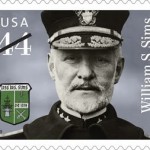 The past year has been rather a lot of pontificating around the role history plays in modern decision making. With the centenary of the outbreak of World War 1 this year, there have been comparisons between the start of that conflict and current events unfolding between Russia and Ukraine, with the obvious implication that we’re perhaps not so good at learning the harsh lessons history throws us.
The past year has been rather a lot of pontificating around the role history plays in modern decision making. With the centenary of the outbreak of World War 1 this year, there have been comparisons between the start of that conflict and current events unfolding between Russia and Ukraine, with the obvious implication that we’re perhaps not so good at learning the harsh lessons history throws us.
There seems an almost inability of mankind to learn successfully from what has gone before, even when much of it is not really all that new. Talk to children today for instance, and they will no doubt think that many of the problems they face are unique to them, when in reality most generations have gone through similar problems in their own time.
It is similar when it comes to the disruptive power of technology. It’s easy to fall into the trap of thinking that the rapid pace of change these days somehow separates us from past generations, that an age of the Internet, biotechnology and 3d printing must inevitably make our responses to these shift markedly different to the response of previous generations to their own disruptions.
The reality is, I suspect, somewhat different. A poignant tale to elucidate this point comes courtesy of technology historian Elting Morison in his case study Gunfire at Sea. It tells the story of naval warfare around the turn of the 20th century. Battles at sea back then were notoriously hit and miss affairs. Morison recounts that one study found that naval gunners would typically achieve a hit rate of just over 1%. Pretty awful in other words.
You would think that in such an environment leaders would be crying out for better ways to do things. Except that didn’t really happen, and it didn’t happen despite better options being available. The outlier at the time was a British ship, captained by Admiral Percy Scott, who had devised a novel way of aiming his guns that improved the success rate by some 3,000%. When US Navy junior office William S Sims spoke with Scott, he immediately saw the potential of the concept and tried to instigate it into the US Navy.
The problem being that they weren’t interested whatsoever. Despite repeated efforts to prove the effectiveness of the new technique, Sims was stonewalled by Navy chiefs. No amount of data or reports would convince them otherwise, and it wasn’t until Sims was fired and resorted in writing directly to the President himself that change took place. Such is Sims’ subsequent position within the Navy that a stamp was made to commemorate his role.
So why did his attempts fall on deaf ears? Morison points out that Navy chiefs believed their efforts were already best of breed, so there wasn’t any possible improvements to be made. They’d recently won a war using their current approach after all. If a problem did exist, it wasn’t with the equipment whatsoever.
What’s more, the experiment setup by the Navy to test Sims’ theory was deliberately designed to fail to produce the results Sims had in his own test, because the experiment was done on land rather than at sea. The Navy then used the proof from this flawed experiment to shush Sims up.
It is remarkable to look back in hindsight at the level of persistence required to drive this innovation through, and the lessons that have not been heeded since that time. Just as then, modern innovations are often resisted by precisely the people that should be first to see their potential. This executive blindness sits at the heart of the innovators dilemma. The Sims innovation was only implemented after the CEO (President) over-ruled his senior managers. It’s not exactly out of the innovation textbook, yet similar stories are no doubt common in organizations throughout the world today.
I’m going to talk in more detail tomorrow about some of the reasons why these hurdles to innovation have persisted through time, and what some of the main ones are, but Sims’ account should remind us that whilst markets and technologies are changing in unique ways today, the fundamentals that underpin these changes are often very similar, and therefore there are many lessons we can learn from how they have been tackled in the past.
What's truly astounding is the fact that we can cite so many like examples and still people fail to learn the lesson. Remember Billy Mitchell sinking a target ship with aircraft? Etc. Etc. Etc. Maybe the lesson we're missing is that age calcifies man's ability to adapt to change. Isn't it always the young who see the innovation, and the aged who resist it? Of course, being 71, I am decrying my own logic by remaining an innovator. Strange…
Indeed Jack. As you say, maybe age weds us to how things are, rather than how they could be. I remember reading about some of the great teams over the year, and many of them were staffed with young people, because they didn't yet know what was deemed impossible.
Fascinating story. I hadn't heard that before. Just goes to show how little is really novel.